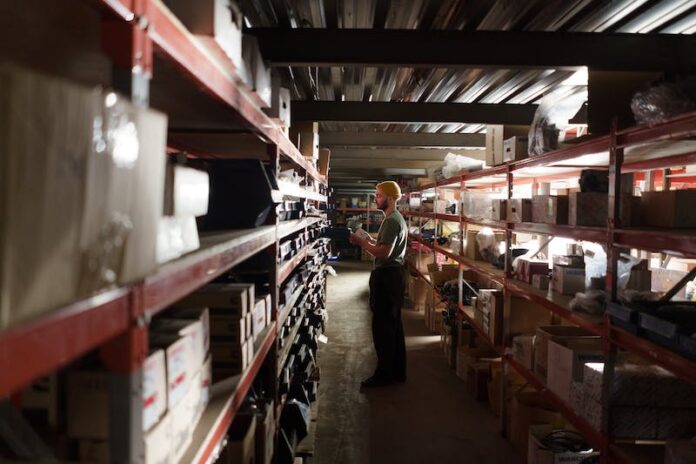As an online store owner, managing and shipping customer orders can be a significant burden on resources. As your business grows, fulfilling these orders in-house may become increasingly challenging. This is when you may consider outsourcing to either a traditional warehouse or third-party logistics (3PL) warehousing. Understanding the benefits of each option is vital in the logistics world today.
A 3PL warehouse is a means of outsourcing storage and logistics operations to a specialized logistics provider, while traditional warehousing refers to managing these operations in-house. To gain a deeper understanding of the key differences between these two options, let’s take a closer look at each one.
What is 3PL Warehousing?
3rd-party logistics (3PL) warehousing is a type of outsourcing service where a company outsources its storage and inventory management needs to a specialized 3PL provider. The 3PL provider operates and manages a 3PL warehouse, where it stores the products and materials for its clients.
The primary goal of 3PL warehousing is to provide cost-effective and efficient storage and inventory management solutions for businesses, so they can focus on their core operations. 3PL providers offer a wide range of services, including order fulfillment, transportation, returns management, and more.
3PL warehousing is, thus, becoming increasingly popular among businesses of all sizes, as it allows them to save costs, increase efficiency, and reduce the time and resources they need to invest in warehouse management and logistics. Additionally, 3PL providers have specialized expertise and often leverage advanced technology, which can result in improved supply chain management and inventory tracking compared to traditional warehousing.
What is Traditional Warehousing?
Traditional warehousing refers to a storage and inventory management model where the company owning the inventory also operates and manages its own warehouse. In this arrangement, the company is responsible for the costs associated with owning and maintaining the warehouse, as well as the equipment and personnel required to manage it.
Traditional warehousing is often used by companies with large amounts of inventory that need to be stored for extended periods of time, for example, automotive manufacturers. This model can be more cost-effective for companies with a high volume of inventory and a large enough warehouse, as the costs of ownership and maintenance can be spread out over a larger number of items.
However, traditional warehousing can also be less efficient compared to third-party logistics (3PL) warehousing, as it requires a business to invest in and manage its own warehouse and inventory management systems. Additionally, traditional warehousing may be less flexible, as it requires a company to have the resources and expertise to manage its own warehouse and inventory.
Differences between 3PL Warehouse and Traditional Warehouse
Traditional warehousing and third-party logistics (3PL) warehousing are two different approaches to storing and managing inventory. Here are some key differences outlines between the two options.
- Ownership
In traditional warehousing, the company owning the inventory also owns and operates the warehouse. In 3PL warehousing, the warehouse is owned and operated by a separate company, known as a 3PL provider.
- Services
Traditional warehousing often involves just storage, while 3PL warehousing typically includes a wider range of services such as inventory management, order fulfillment, transportation, and more.
- Cost
Traditional warehousing can be more expensive due to the company having to invest in and maintain its own warehouse and equipment. 3PL warehousing, on the other hand, allows companies to save costs by outsourcing these expenses to a 3PL provider.
- Flexibility
3PL warehousing provides greater flexibility when compared to traditional warehousing, as companies can scale their services up or down based on their changing needs and evolving customer demands.
- Expertise
3PL providers have specialized expertise in supply chain management and logistics, allowing them to offer better service, more cost savings, and improved operational efficiency compared to traditional warehousing.
- Technology
3PL warehousing often leverages advanced technology and integrated systems for inventory management, tracking, and reporting, which can result in increased efficiency and accuracy as opposed to traditional warehousing.
Conclusion
The choice between traditional warehousing and 3PL warehousing depends on a company’s specific needs, goals, and budget. While traditional warehousing may be a good fit for some companies, others may find that 3PL warehousing offers a more cost-effective, flexible, and efficient solution.
Appeio is a tech enthusiast and gamer who loves to write about the latest news and trends in the industry. He has been writing for over 5 years and has published articles on a variety of websites, including TechCrunch, IGN, and GameSpot. He is passionate about sharing his knowledge with others and helping them stay up-to-date on the latest tech news. In his spare time, he enjoys playing video games, watching movies, and spending time with his family.













